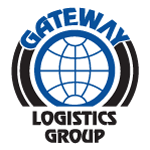- Intermodal transport optimizes global trade by combining ocean, air, rail, and trucking, lowering costs and improving delivery efficiency.
- Businesses benefit from cost savings, faster deliveries, and a reduced carbon footprint by utilizing multiple transport modes strategically.
- Despite its advantages, intermodal transport faces challenges like port congestion and customs complexities, which can be addressed with smart strategies and technology.
When you order a product online, it doesn’t magically appear at your door. It embarks on a journey that involves multiple modes of transportation, switching from ships to trains to trucks before arriving at its final stop. This process—known as intermodal transport—is what keeps global trade moving.
But how does this seamless transition between different transport methods work? And why is it so vital for businesses looking to cut costs and speed up deliveries with logistics services?
Let’s learn!
What Is Intermodal Transport and How Does It Work?
Intermodal transport refers to moving goods using multiple modes of transportation without direct handling of the cargo itself. Standardized shipping containers allow smooth transfers between ships, trains, trucks, and even aircraft, ensuring faster transitions and reduced damage risks.
This process typically follows a structured sequence:
- Ocean freight moves goods across long international distances.
- Rail transport connects ports to inland distribution hubs.
- Trucking completes last-mile deliveries to retailers, warehouses, or customers.
- Air freight (if needed) speeds up urgent shipments.
By integrating these transport methods, businesses cut costs, reduce delays, and increase flexibility—all while maintaining supply chain efficiency.
Breaking Down the Core Components of Intermodal Transport
Global trade depends on a mix of ocean, air, rail, and trucking to move goods across borders efficiently. Each mode plays a specific role in keeping supply chains running smoothly.
Let’s take a closer look at how each mode contributes to intermodal transport and why they work best together.
Ocean Freight
Shipping by sea has been the foundation of global commerce for centuries, and today, it still accounts for over 90% of international trade. Massive container ships transport everything from raw materials to consumer goods across oceans, offering a cost-effective way to move bulk cargo over long distances.
However, while ocean freight keeps costs low, it comes with longer transit times and port delays. This is where intermodal transport plays a key role—seamlessly transferring shipments from ships to rail or trucking networks for efficient inland distribution.
Air Freight
Not all shipments can wait weeks to arrive at their destination. Air freight is the go-to option for businesses that need speed, making it ideal for time-sensitive and high-value goods. Though it comes with a higher price tag, it offers reliability and quick turnaround times, especially for industries that rely on just-in-time (JIT) supply chains.
Businesses use air transport for:
- Perishable goods like food and pharmaceuticals.
- Electronics, luxury products, and other high-value shipments.
- Urgent supplies that cannot be delayed by ocean or rail transport.
Rail Freight
Once shipments arrive at ports or air hubs, they travel long distances inland. Rail freight is one of the most cost-effective and environmentally friendly ways to move goods over land. It offers a great balance between cost, speed, and capacity, making it a preferred option for large-volume shipments.
Why businesses use rail transport:
- Lower fuel costs compared to trucking.
- Higher cargo capacity, reducing the number of shipments needed.
- More eco-friendly, cutting carbon emissions compared to trucks.
Trucking
No matter how far a shipment has traveled, it still needs to reach its final destination with logistics services. Trucking is the link between ports, rail hubs, and distribution centers, making it an essential part of intermodal transport. Whether delivering to warehouses, retail stores, or customers’ doorsteps, trucks provide the flexibility needed for last-mile logistics.
Intermodal trucking offers several advantages:
- Reduces dependence on long-haul trucking, cutting fuel and labor costs.
- Speeds up final-mile deliveries to meet demand faster.
- Adapts to supply chain disruptions by offering flexible routing options.
As technology advances, electric and autonomous trucks are expected to improve efficiency even further, making intermodal trucking even more effective.
Why Businesses Rely on Intermodal Transport
In a fast-moving global economy, businesses can’t afford supply chain bottlenecks, high transportation costs, or unexpected disruptions. That’s where intermodal transport comes in.
Cost Savings Through Optimized Shipping Routes
Shipping costs can quickly eat into profits if businesses rely too heavily on a single mode of transport. Intermodal logistics helps companies save money by selecting the most cost-effective option at every stage of the journey.
- Ocean freight is the most affordable option for long-haul international shipments.
- Rail transport costs significantly less than long-haul trucking for inland distribution.
- Trucking is ideal for shorter, time-sensitive deliveries but becomes expensive over longer distances.
Businesses can cut down on wasteful spending by carefully combining these modes. Instead of using long-haul trucking alone, they can first transport goods by ocean and rail, then shift to trucks for final-mile delivery.
This approach lowers fuel costs, minimizes road congestion fees, and optimizes supply chain spending.
Faster and More Reliable Deliveries
Speed is a critical factor in global trade. Customers expect faster delivery times, and businesses need to meet those expectations while keeping costs in check. Intermodal transport increases reliability by offering multiple route options, reducing the risk of delays.
- If a port is congested, goods can be moved via air or rail instead of waiting for backlogs to clear.
- If a highway is blocked due to weather or accidents, shipments can shift from trucks to rail.
- If a rail network faces disruption, businesses can rely on trucking for inland transport.
By using intermodal transport, companies can respond quickly to disruptions, ensuring that goods reach their destinations on time and supply chain schedules remain intact.
Lower Carbon Footprint and Sustainable Logistics

With growing pressure to adopt eco-friendly shipping, businesses are moving away from truck-heavy logistics and embracing intermodal solutions that focus on rail and ocean freight. This shift significantly reduces carbon emissions and fuel consumption.
- Rail transport produces up to 75% fewer carbon emissions than long-haul trucking.
- Ocean shipping is more fuel-efficient per ton-mile than air or road transport.
- Intermodal routing reduces empty miles, lowering unnecessary fuel consumption.
For companies prioritizing sustainability goals, intermodal transport offers a greener way to move goods without sacrificing efficiency. Some businesses are even integrating electric and hybrid trucking fleets for last-mile deliveries, further reducing their environmental impact.
Flexibility in Managing Supply Chain Disruptions
Global supply chains are unpredictable. Natural disasters, fuel shortages, labor strikes, and geopolitical conflicts can disrupt shipping routes overnight. Intermodal transport provides the flexibility needed to adjust quickly and keep operations running. Maintaining a variety of transportation options helps businesses reduce downtime, prevent significant losses, and maintain customer satisfaction even in the face of disruptions.
Improved Inventory and Warehouse Management
Efficient logistics go beyond transportation; they also impact inventory management and warehousing. Intermodal shipping allows businesses to plan better, avoid overstocking or understocking, and reduce storage costs.
- Just-in-time (JIT) supply chains rely on intermodal transport for consistent, scheduled deliveries.
- Warehouses can operate more efficiently when goods arrive in predictable shipments rather than all at once.
- Freight consolidation helps businesses group shipments, reducing costs and storage space requirements.
With a well-structured intermodal strategy, businesses can maintain a leaner supply chain, freeing up capital that would otherwise be tied up in inventory storage.
Key Challenges in Intermodal Transport And How to Overcome Them
While intermodal transport offers efficiency and cost savings, businesses still face challenges that can disrupt operations. However, with the right strategies, companies can overcome these barriers and keep their supply chains running smoothly.
Port Congestion and Delays
Major ports worldwide handle millions of containers daily, and congestion is a recurring issue. Delays in unloading and clearance can stall shipments, leading to missed deadlines and supply chain disruptions.
This is because high container traffic, labor shortages, and customs backlogs contribute to long wait times. Peak seasons, such as holiday periods, often make congestion worse.
How to fix it:
- Diversify Entry Points: Instead of relying on major ports, businesses can use alternative ports with lower traffic.
- Optimize Scheduling: Scheduling shipments during off-peak hours can reduce wait times.
- Leverage Technology: Real-time tracking and predictive analytics can help businesses reroute shipments if a port is experiencing heavy congestion.
Complex Customs and Documentation
International shipping requires strict compliance with customs regulations, and paperwork errors can lead to costly delays. Each country has different import/export requirements, making the process even more complicated.
Incorrect documentation, misclassification of goods, or missing permits often lead to customs holds.
You can fix this by:
- Using Automated Documentation Systems: Digital platforms help businesses process and submit customs paperwork efficiently.
- Working with Experienced Freight Forwarders: Logistics experts understand local regulations and can prevent compliance issues.
- Staying Updated on Trade Agreements: Countries often revise trade rules, so businesses must ensure they meet current requirements.
Cost Fluctuations in Fuel and Freight Rates
Shipping costs constantly change due to fuel prices, carrier surcharges, and freight rate fluctuations. Global oil prices, economic shifts, and peak-season demand all contribute to these variations, making it difficult for businesses to predict expenses.
To manage these costs, companies can secure long-term contracts with carriers or use digital freight marketplaces to compare real-time rates. Optimizing delivery routes, consolidating shipments, and incorporating rail transport can also help reduce fuel expenses and stabilize shipping budgets.
Infrastructure Limitations in Some Regions
Not all regions have the infrastructure to support smooth intermodal transport. Poor road conditions, outdated rail networks, and limited port facilities can lead to delays and higher costs, especially in developing markets.
Businesses can work with local logistics providers to navigate these challenges and use multimodal transport hubs to transfer goods more efficiently. Planning extra lead time for shipments in regions with weaker infrastructure can also help minimize disruptions.
The Future of Intermodal Transport in Global Trade
As trade expands, automated ports, AI-driven logistics, and digital freight networks are reshaping global shipping. Companies are investing in electric and autonomous trucks, making deliveries faster and more sustainable. Meanwhile, blockchain-based logistics tracking is improving security and transparency in intermodal transport.
Businesses that embrace these innovations will gain a competitive edge, reducing delays and improving cost efficiency in their global supply chains.
Want to streamline your global shipping strategy with logistics services? At Gateway Logistics, we offer expert intermodal logistics services tailored to your needs. Contact us today to optimize your supply chain and keep your deliveries on track!

